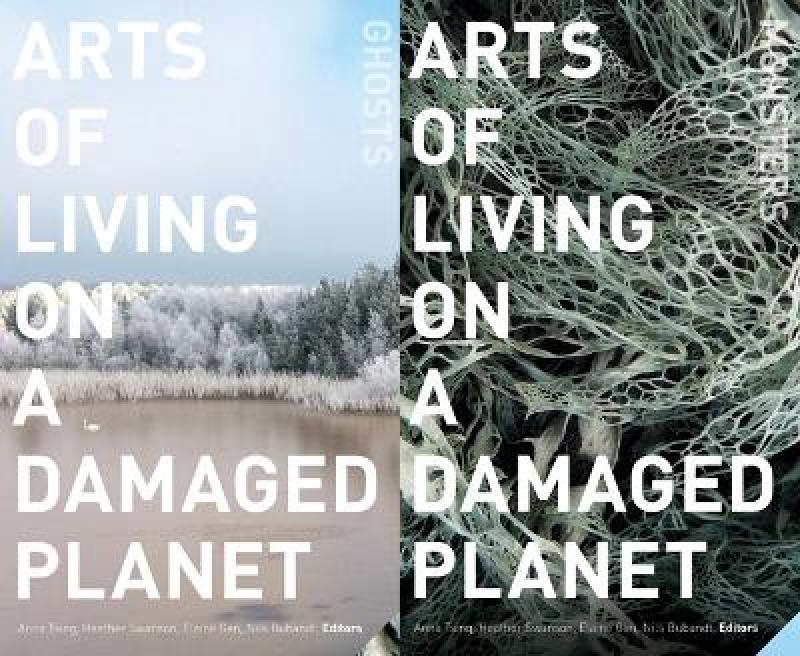Arts of Living on a Damaged Planet exposes us to the active remnants of gigantic past human errors-the ghosts-that affect the daily lives of millions of people and their co-occurring other-than-human life forms. Challenging us to look at life in new and excitingly different ways, each part of this two-sided volume is informative, fascinating, and a source of stimulation to new thoughts and activisms. I have no doubt I will return to it many times.-Michael G. Hadfield, University of Hawaii at Manoa "Facing the perfect storm strangely named the Anthropocene, this book calls its readers to acknowledge and give praise to the many entangled arts of living which made this planet liveable and which are now unravelling. Grandiose guilt will not do, we need to learn noticing what we were blind to, a humble but difficult art. The unique welding of scholarship and affect achieved by the texts here assembled tells us that learning this art also means allowing oneself to be touched and induced to think and imagine by what touches us."-Isabelle Stengers, author of Cosmopolitics I and Cosmopolitics II "What an inventive, fascinating book about landscapes in the anthropocene! Between these book covers, rightside-up, upside-down, a concatenation of social science and natural science, artwork and natural science, ghosts of departed species and traces of our own human shrines to memory... Not a horror-filled glimpse at destruction but also not a hymn to romantic wilderness. Here, guided by a remarkable and remarkably diverse set of guides, we enter into our planetary environments as they stand, sometimes battered, sometimes resilient, always riveting in their human-and non-human-richness. Arts of Living On a Damaged Planet is truly a book for our time."-Peter Galison, Harvard University
Contents
Ghosts on a Damaged Planet
Introduction: Haunted Landscapes of the Anthropocene
Elaine Gan, Nils Bubandt, Anna Lowenhaupt Tsing, and Heather Anne Swanson
1. A Garden or a Grave?: The Canyonic Landscape of the Tijuana-San Diego Region
Lesley Stern
In the Midst of Damage
2. Marie Curie's Fingerprint: Nuclear Spelunking in the Chernobyl Zone
Kate Brown
3. Shimmer: When All You Love Is Being Trashed
Deborah Bird Rose
Footprints of the Dead
4. Future Megafaunas: A Historical Perspective on the Scope for a Wilder Anthropocene
Jens-Christian Svenning
5. Ladders, Trees, Complexity, and Other Metaphors in Evolutionary Thinking
Andreas Hejnol
6. No Small Matter: Mushroom Clouds, Ecologies of Nothingness, and Strange Topologies of Spacetimemattering
Karen Barad
7. Haunted Geologies: Spirits, Stones, and the Necropolitics of the Anthropocene
Nils Bubandt
What Remains
8. Ghostly Forms and Forest Histories
Andrew S. Mathews
9. Establishing New Worlds: The Lichens of Petersham
Anne Pringle
Coda: Concept and Chronotope
Mary Louise Pratt
Contributors
Index
Contents
Monsters and the Arts of Living
Acknowledgments
Introduction: Bodies Tumbled into Bodies
Heather Anne Swanson, Anna Lowenhaupt Tsing, Nils Bubandt, and Elaine Gan
1. Deep in Admiration
Ursula K. Le Guin
Inhabiting Multispecies Bodies
2. Symbiogenesis, Sympoiesis, and Art Science Activisms for Staying with the Trouble
Donna Haraway
3. Noticing Microbial Worlds: The Post Modern Synthesis in Biology
Margaret McFall-Ngai
Beyond Individuals
4. Holobiont by Birth: Multilineage Individuals as the Concretion of Cooperative Processes
Scott F. Gilbert
5. Wolf, or Homo Homini Lupus
Carla Freccero
6. Unruly Appetites: Salmon Domestication “All the Way Down”
Marianne Elisabeth Lien
7. Without Planning: The Evolution of Collective Behavior in Ant Colonies
Deborah M. Gordon
At the Edge of Extinction
8. Synchronies at Risk: The Intertwined Lives of Horseshoe Crabs and Red Knot Birds
Peter Funch
9. Remembering in Our Amnesia, Seeing in Our Blindness
Ingrid M. Parker
Coda. Beautiful Monsters: Terra in the Cyanocene
Dorion Sagan
Contributors
Index
